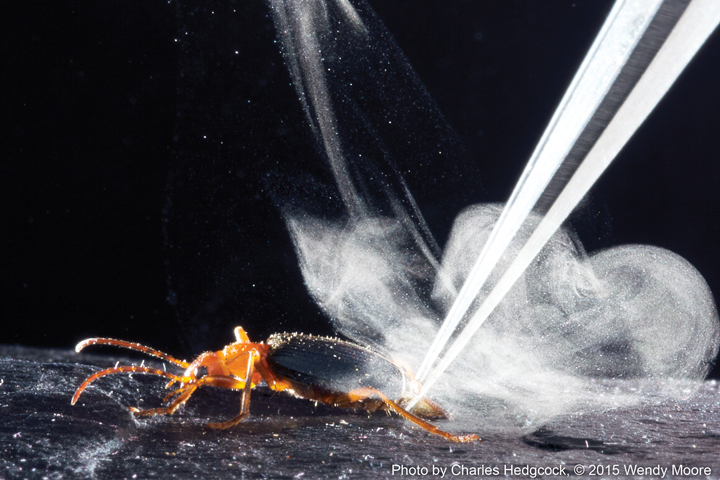TORONTO – Forget Spider-Man, this is a far cooler superpower.

Meet the bombardier beetle. This little guy has no real natural predators, and it’s no surprise: when provoked, he produces an internal chemical explosion and then fires out a jet of boiling liquid at the aggressor.
Not only does this amazing beetle produce this chemical reaction, but it does so with machine-gun-like action, with rapid pulses.
Okay, there is one, tiny downside: this near-boiling liquid shoots out of his rear end.
READ MORE: New species of beetle found in an unlikely place — a megacity

Get breaking National news
This cool little beetle is pretty unique: While other beetles produce a similar toxin to that of the bombardier beetle — called benzoquinone — this little guy superheats that toxin and emits it in an intense pulse.
Not only that, but this half-inch beetle is able to create a chemical reaction that almost reaches the boiling point while in its abdomen (makes heartburn look a little tame, doesn’t it?).
But exactly how this whole reaction occurred was never directly observed, until now.
A team of researchers from MIT and the University of Arizona used ultra-fast X-ray imaging to capture the process. Of the 500 beetles, researchers were able to witness 30 discharges from 14 separate beetles.
They found that the beetle has two internal chambers: one where the liquid is held and another called the explosion chamber. What they discovered was that an increase in pressure during the explosion expands a thin, flexible membrane which closes the valve to the precursor chamber. When the liquid is shot out, the membrane goes back to its original state and then allows the next pulse to form.
And this pulse is much hotter than that of other beetles, but it also shoots it out about five times faster.
READ MORE: Research at ‘Frozen Zoo’ gene bank aims to resurrect extinct species
So how does this unique beetle not die from the inside out? Researchers believe that the speed of the pulse may actually help cool the inside chamber down.
“By having a pulsed delivery, these small beetles produce a relatively large amount of defensive spray, which they can aim precisely and with great force and speed,” said Wendy Moore of the University of Arizona and an author of the study. “This is truly one of the most remarkable and elegant defensive mechanisms documented to date.”
The interesting thing about this finding is that researchers hope to use this new knowledge in propulsion systems or blast-protection systems.
Sadly, no research has been done on what would happen if you were bitten by a radioactive bombardier beetle.








Comments